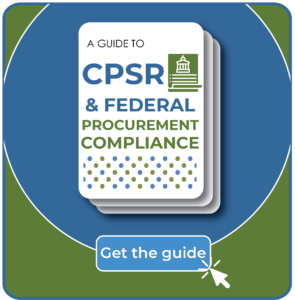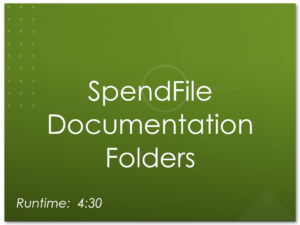DCMA CPSR Group to Focus on Consent to Subcontract
Think that since your company doesn’t have an approved purchasing system, you’re flying under the Defense Contract Management Agency’s (DCMA’s) radar? Think again. Recently, the DCMA has signaled they’re expanding their attention on the Consent to Subcontract clause.
In April 2023, John Foley, DCMA CPSR Group Director, and Randy Shelby, DCMA Supervisory Procurement Analyst, participated in a panel discussion in support of Government Contracts Week in Orlando. A primary focus of the discussion was on Consent to Subcontract packages. Before we dive into why they emphasized it, here’s some background on what Consent to Subcontract is:
FAR 52.244-2, Subcontracts, defines “Consent to Subcontract” as the Contracting Officers written consent to enter into a particular subcontract. “Subcontract” includes, but is not limited to, subcontracts and purchase orders, as well as any changes thereto. The DCMA CPSR group recognizes they are not receiving as many requests to review Consent to Subcontract packages as they should.
FAR 52.244-2 can affect contractors with and without an approved purchasing system. According to DCMA, approximately 500 contractors have an approved purchasing system but with more than 2.5 million unique entity IDs having been generated by SAM.gov[i] through April 2022, it is reasonable to see why the DCMA CPSR group expects to see more consent packages.
FAR 52.244-2 grants DCMA insight into your purchasing system regardless of whether your company has tripped the $50M threshold for a formal CPSR. Firm Fixed Price (FFP), Cost Reimbursable (CR), Time & Materials (T&M), or Labor Hour (LH) contracts can all contain FAR 52.244-2. The DCMA CPSR group acts as a functional specialist on Consent to Subcontract packages, provides its opinion to the ACO, and alerts ACOs regarding Consent to Subcontract packages.
As prescribed by FAR 44.204, FAR 52.244-2 must be included in solicitations and contracts when considering:
(i) A cost-reimbursement contract;
(ii) A letter contract that exceeds the simplified acquisition threshold;
(iii) A fixed-price contract that exceeds the simplified acquisition threshold under which unpriced contract actions (including unpriced modifications or unpriced delivery orders) are anticipated;
(iv) A time-and-materials contract that exceeds the simplified acquisition threshold; or
(v) A labor-hour contract that exceeds the simplified acquisition threshold.
If a cost-reimbursement contract is contemplated, for civilian agencies other than the Coast Guard and the National Aeronautics and Space Administration, the contracting officer shall use the clause with its Alternate I.
Prioritizing Consent to Subcontract Packages
So why is the DCMA prioritizing Consent to Subcontract packages? In SpendLogic’s article, DCMA Aims to Simplify CPSRs for Small Businesses, we discussed DCMA strategy, set by John Foley, to ease contractors into purchasing system reviews. The DCMA believes that the best way to do this is to increase the reviews of Consent to Subcontract packages. Contractors thereby build familiarity with requirements over time, working with DCMA, instead of the first encounter being when a contractor receives a 90-day notice that their first CPSR is coming up, setting off panic and a flurry of activity.
Consent to Subcontract packages require the submission of the following documentation:
(i) A description of the supplies or services to be subcontracted.
(ii) Identification of the type of subcontract to be used.
(iii) Identification of the proposed subcontractor.
(iv) The proposed subcontract price.
(v) The subcontractor’s current, complete, and accurate certified cost or pricing data and Certificate of Current Cost or Pricing Data, if required by other contract provisions (i.e., Price Analysis or Cost Analysis).
(vi) The subcontractor’s Disclosure Statement or Certificate relating to Cost Accounting Standards when such data are required by other provisions of this contract.
(vii) A negotiation memorandum[i].
Manual Documentation vs. Purpose-built Tools
While some companies choose to utilize manual processes for maintaining this documentation, the government contracting industry is increasingly turning to purpose-built tools. At the head of this movement is SpendLogic, which has been applying TurboTax-like automation to procurement documentation for government contractors since 2016.
For companies that are subject to the Consent to Subcontract clause, SpendLogic can help. Our automated procurement documentation module, SpendFile, can ensure that each element of the Consent to Subcontract package identified above is captured in the ordinary course of processing the purchase order/subcontract. SpendLogic’s SpendFile has a built-in CPSR module which will allow you to specify the exact files to which DCMA and the ACO may review and provide timed file access – essentially an electronic submission of your Consent to Subcontract package.
SpendLogic recommends conducting a review of your Prime contracts to determine which Prime contracts contain FAR 52.244-2 and whether you are required to obtain consent from your contracting officer before issuing a subcontract or purchase order to a supplier. With a 100% CPSR pass rate since 2016, SpendLogic can assist you and your company with Consent to Subcontract packages by providing the necessary support, tools, and resources your company needs create efficiencies and compliance. To learn more, schedule a 15-minute demo or email us at [email protected].





 SpendFile Documentation Folders
SpendFile Documentation Folders